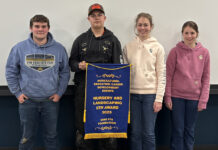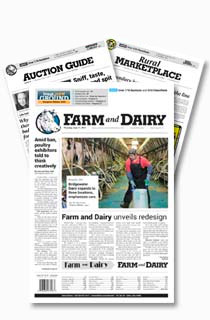Winter has finally subsided, making way for spring flowers and hopefully regrowth of our drought-stricken pastures and hay fields. I have noticed more and more in our fields, creeks and roadside ditches, including a large amount of trash and debris. It makes me sad that in our beautiful rural communities we still must discuss that garbage has significant negative effects on our environment.
Not only is it illegal to litter, but also when garbage ends up in our creeks and fields it can significantly affect the health of livestock and wildlife.
Under Ohio law, “litter is any trash thrown, discarded or dropped by a person onto public property, private property not owned by the individual or into Ohio’s waterways. The Ohio Revised Code prohibits littering, regardless of whether or not it was intentional. Numerous laws prohibit littering and illegal dumping. Littering is a serious offense, punishable by fines of up to $500 and 60 days in jail.”
That being said, I understand that accidents happen. Windy days and occasional flooding can spread litter across areas that can have serious implications on our livestock. It is the producer’s responsibility to regularly walk pastures and hay fields to make sure debris is cleaned up for the safety of their livelihood.
Impact on farms
Trash can accidentally be baled up in hay, causing serious issues to the health of animals that consume it. Ingested trash can cause digestive issues, injuries from sharp objects and can even cause death. Ingested trash can cause blockages and sharp objects, like cans and broken glass, can puncture an animal’s digestive system. Hardware disease occurs when metal objects are ingested and migrate to the animal’s rumen causing inflammation and infection.
Plastic bags can block airways and the digestive tract causing digestive issues, reduced feed intake, eventual starvation and potential suffocation. Sharp objects in pastures can be stepped on causing hoof injuries that can lead to serious infections. Farm equipment can even be damaged by trash becoming tangled in machinery or puncturing tires.
Impact on waterways
When litter reaches our waterways, not only can fish and wildlife become entangled in debris, but the decomposing waste can also deplete oxygen levels in the water and non-biodegradable trash, including plastics and Styrofoam, can release chemicals and bacteria that can further contaminate the water.
The degradation of water quality can pose health risks not only to livestock and wildlife, but also to humans as it enters our drinking water supply. Even the smallest of creeks will eventually lead to the larger waterways in our area that we depend on for fresh drinking water.
Pick it up
How can we minimize the effects of trash on our livestock and in the environment? The simplest answer is if you see it, pick it up. Clear fields of debris before harvesting hay or turning livestock out to pasture. Check hay for trash before feeding it. Make sure to dispose of trash properly. Increasing awareness of the impact of litter on the environment will also help.
This year, the National Association of Conservation Districts is celebrating its 70th celebration of soil and water conservation education. “Stewardship Week” runs from April 27 to May 4.
To help bring awareness of the litter problem in our county, the Noble Soil and Water Conservation District partners with Buckey Disposal to offer a trash pickup contest during “Stewardship Week.”
Let’s use this week to bring awareness of the importance of taking care of our natural resources for ourselves, our livestock, our neighbors and our community. We need to work together to make a change.













